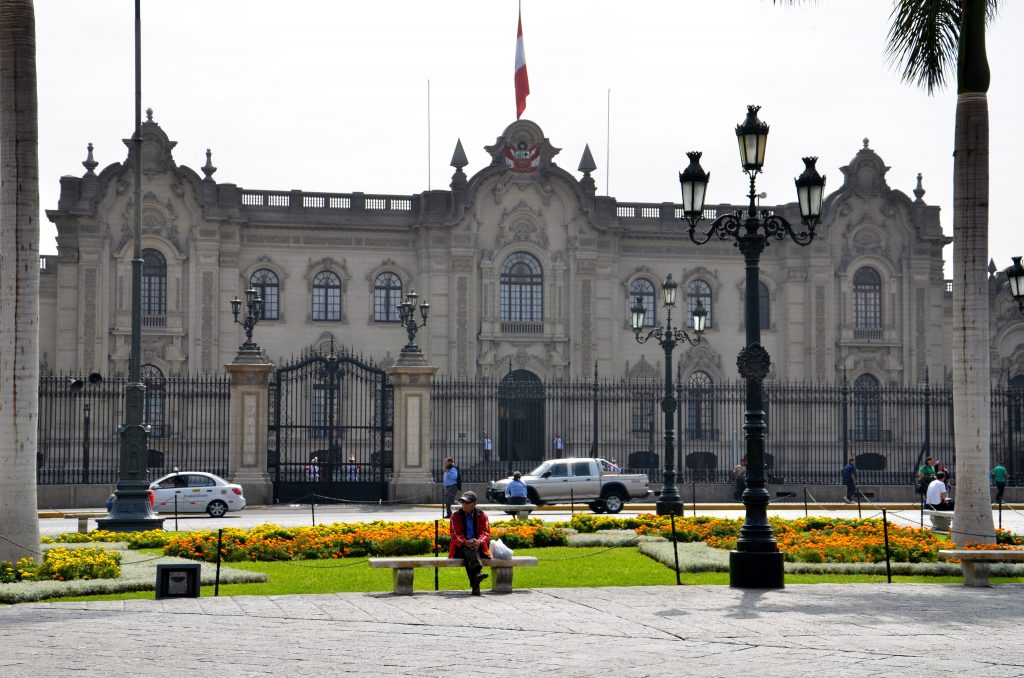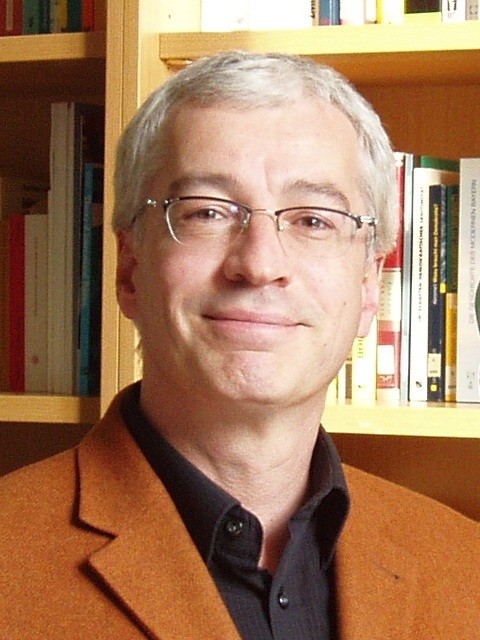Peru: Elections Ahead in the Troubled Waters of a Fragile Party System
A few days before the presidential and parliamentary elections on April 11, there is little sign of electoral enthusiasm in Peru. Instead, recent polls indicate profound confusion among the electorate in the face of a multitude of candidates.
The covid pandemic, which has been going on for a year, hit Peru very hard – at one point it was the country with the highest rate of infections and deaths – and had serious economic and social consequences. The country is currently experiencing a third wave of the pandemic. In addition, Peruvians have been living with a permanent political crisis for five years. It has fueled disenchantment with politics and, together with a dysfunctional party system, has led to a political oversupply: No fewer than 18 presidential candidates are up for election on April 11. It is no coincidence that the non-voters and the undecideds are leading in the opinion polls; according to the Instituto de Estudios Peruanos (IEP), they account for 44% of eligible voters, while only just under 10% or less would vote for one of the frontrunners. It fits the mood that in February the “Vacunagate” scandal became public: Government officials, up to and including the Minister of Health herself, had been vaccinating themselves long before the general public with Sinopharm vaccines intended for Phase III clinical trials.
Brief chronicle of a permanent crisis
The almost permanent crisis mode since 2016 has manifested itself primarily in ongoing conflicts between the executive and legislative branches and has been surrounded by corruption scandals and anti-corruption initiatives. It began shortly after the contested 2016 presidential election, in which the favorite Keiko Fujimori – daughter of imprisoned ex-president Alberto Fujimori – was defeated in the runoff by a razor-thin margin by former Minister of Economics Pedro Pablo Kuczynski. Fujimori blocked the government’s work from the beginning, although at least the economic policy (reform) ideas offered hardly any points of friction. With the absolute majority of her party, Fuerza Popular (FP), in Parliament, she used the scope of action provided by “parliamentarized presidentialism” to bring down the government through votes of no confidence and impeachment proceedings. Kuczynski survived a first impeachment in December 2017 and, by then embroiled in the Odebrecht corruption scandal, resigned before a second one.
First Vice President Martín Vizcarra assumed the presidency in March 2018. Considered weak and lacking in profile, Vizcarra took advantage of a recent corruption scandal in the judiciary to vigorously push forward an anti-corruption program with extensive political reforms, which he had confirmed by referendum, buoyed by the political (polling) mood among the citizens. The rest of the showdown can only be reported here in brief: A continued blockade by the FP-dominated parliament; a dissolution of parliament in September 2019 that took place on the fringes of the constitution but was later rubber-stamped by the Constitutional Court; the election of an interim parliament for the remainder of the term in January 2020; amid the pandemic, renewed conflicts with the parliament, a failed first impeachment against Vizcarra in September 2020 and a successful second one in November; a parliament-appointed interim government under Merino Lama, who left after five days amid fierce protests – met with extreme violence by police; leading to the current interim government under Francisco Sagasti.
A dysfunctional party system as a crisis driver
The political record since 2016 is disastrous and marked by the long shadow of corruption. All presidents since 2001 – as well as the twice failed candidate Keiko Fujimori – have been charged with corruption and some have been in pre-trial detention (two-time ex-president Alan García, one of the most prominent figures in Peru’s recent democratic history, evaded arrest by committing suicide). On the one hand, this can be seen as a success for the prosecuting authorities; on the other hand, it has further damaged the image of the political class as such, especially since illegal campaign financing was also involved in each case. In essence, however, the political misery is closely linked to the way the Peruvian party system functions. After the collapse of the old party system at the beginning of the Alberto Fujimori era (1990-2000), it has not yet been able to stabilize. Already highly fragmented at the national level, it continues to fragment in the 25 departments. Observers speak of a “democracy without parties”, despite or perhaps because of the multitude of party-political groupings.
Judging by the analytical criteria of political science, the party system is almost a total failure for the functioning of democracy. In the BTI 2020, it has an unusually low score for democracies (4). As the BTI country report notes, it suffers in particular from a very low degree of institutionalization, which is remarkable even for the Latin American context. In essence, it cannot fulfill its main function, which is to communicate social interests – which in Peru are very diverse but not very aggregated – in a bundled fashion to the political system in order to arrive at consistent political programs and electable alternatives. Analogous to fragmentation, voter volatility is also very high, while conversely, parties are barely rooted in society. Many revolve around individuals who, because of their personal power interests, are also not interested in promoting party organizations. Fragmentation and volatility intensified even more after the 2020 elections, when the number of parties in parliament increased from six to nine, with Acción Popular as the strongest party receiving only 11% of the valid votes. To the same extent, party and factional discipline weakened, leading to “alliances” and legislative projects that the public could hardly comprehend.
Moreover, Peru’s party system is constantly in flux. Two of the oldest and for decades dominant parties, the (formerly) socialist PAP (Partido Aprista Peruano) and the christian-social PPC (Partido Popular Cristiano), are no longer represented in the current parliament. The same applies to the parties of ex-presidents Toledo, Humala and Kuczynski. Due in part to legal regulations, parties have increasingly become electoral vehicles for political entrepreneurs, who often use them to pursue individual interests. Their less pronounced programmatic orientation is further frayed by the parties’ search for attractive (external) presidential candidates, who often do not agree with all of the party’s political lines. In the jargon of Peruvian observers, parties have thus degenerated into a kind of “vientres de alquiler” (surrogate mothers). This programmatic blurring of the parties is exacerbated by the possibility of a preferential vote (voto preferencial) in the parliamentary elections, which voters can use to select individual candidates on the respective party lists. As a result, candidates sometimes campaign against their colleagues on the list in order to raise their profile among the electorate.
A diffuse picture ahead of the elections
The developments outlined above have contributed to the fact that, even in the week of the elections, no clear picture is emerging of Peru’s possible political direction, nor of any clear political alternatives for the next five years. The two most recent polls by IEP/La República and Ipsos/El Comercio, published on April 4, indicate a great deal of uncertainty among the electorate as to which party or presidential candidate could offer a reasonably appealing solution to the pent-up problems – first and foremost, the social, economic and health-related ones linked to the pandemic, but also those of the medium- to long-term prospects, such as curbing the immense informal sector or more inclusive economic development. Both polls point to further party fragmentation in parliament and a leading group of several presidential candidates, who have, however, consistently alternated in their rankings and are now even closer together in the surveys.
In the parliamentary elections, 19 parties are still in the race, nine of which are currently represented in the interim parliament. Overall, the parties that dominate – to the extent that this can be determined at all – tend to be located in the center-right spectrum, which, as experience has shown, also corresponds to the preferences of the Peruvian electorate. Both polls put Acción Popular slightly in the lead (9-11 % of the votes cast or around 15 % of the valid votes). Founded in 1956 by former President Fernando Belaúnde (1963-1968; 1980-1985), the center-right party is considered reasonably stable and still the most likely to be programmatic. The other parties are unlikely to achieve double-digit results, with several just over the 5 % hurdle. Nevertheless, the fragmentation of parliament could increase to as many as 12 parties.
“Most promising candidates” for the presidency
In the week leading up to the elections, five to seven candidates have slightly edged out the rest, but they are all in the 7-10% range, which is why the order can still change in a “last minute swing” between now and election day. Nor can it be ruled out that one of the remaining candidates will catapult to the front. The “election campaign culture” characterized by a markedly strong focus on election polls since 1990 has always provided surprises. Among the most promising candidates on the right wing are Keiko Fujimori (with 8-9.8 % of the votes cast, according to the polls), the ultraconservative Rafael López Aliaga (Renovación Popular; 6-8.4 %) and the economist Hernando de Soto (Avanza País; 9-9.8 %), known for his work on the informal sector. On the left wing, these are Verónika Mendoza (Juntos por el Perú, 7.3%-9%), who narrowly missed the runoff in 2016, and Pedro Castillo (Perú Libre, 6%-6.6%), who has made strong gains in recent weeks. Harder to classify is former soccer player George Forsyth (Victoria Nacional; 5.7%-8%), who originally tried his hand on the anti-establishment ticket but is considered too politically hazy even by Peruvian standards. Despite the overall low scores to date, the most promising candidate is considered to be the politically experienced Yonhy Lescano (Acción Popular; 8.2%-10%), a member of parliament from 2001 to 2019; however, some of his campaign statements clearly oppose his party’s center-right orientation. According to current polls, he would win in the runoff against all of the aforementioned competitors.
Challenges await
Whoever prevails in the runoff election on June 6 will face a desolate political terrain, difficult governance conditions and enormous problem pressure. He or she will have only weak support in Parliament, whose political orientation raises questions as well due to personalized fragmentation and notoriously low party discipline. Moreover, due to the re-election ban introduced in 2019, most of the new parliamentarians will have little political experience. As can be seen with the still incumbent parliament, which often acts erratically, cooperation between the executive and legislative branches is thus likely to prove very difficult. It would be beneficial if Peru’s political elite remembered the existing consensus elements, such as the “Acuerdo Nacional,” that have been built up but successively neglected over the past 20 years.

